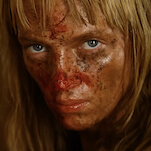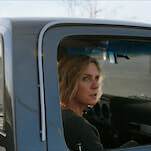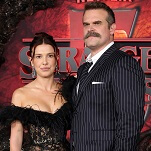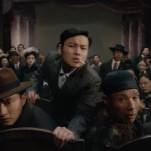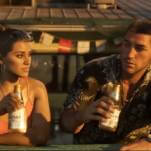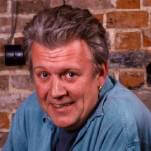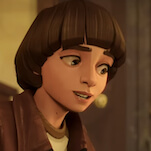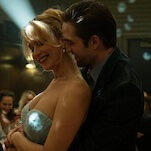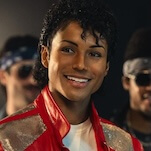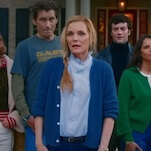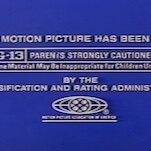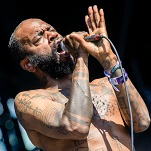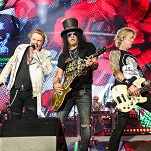Winged Migration

Released with a tagline that promised "Jurassic Park in your own backyard," the delightful 1996 French documentary Microcosmos plays like Godzilla for the Discovery Channel, using special cameras to magnify insects to gargantuan proportions. On the big screen, ordinary spiders and praying mantises looked poised to destroy major cities, and the daily labors of a dung beetle took on a Sisyphean scale. The makers of Microcosmos have returned with an even more ambitious undertaking in Winged Migration, a globetrotting spectacle that took four years to film on all seven continents, with a 450-person crew and camera mounts on gliders, helicopters, balloons, and remote-controlled flyers. But the result isn't nearly as fresh or compelling, not so much because of any real shortcomings behind the camera, but because Mother Nature simply failed to make birds as varied and expressive as insects. Narrated and co-directed by Jacques Perrin, who offers only scant ornithological context in an impenetrable French accent, the film divides squarely into two halves, with the first devoted to fall migration and the second to spring. Since Perrin isn't interested in traditional nature documentaries, the distinction between the two separate journeys doesn't really matter; what's left is a mostly arbitrary assemblage of breathtaking footage set to new-age music. Over 90 minutes, the effect grows more narcotic than hypnotic, but Perrin's crew occasionally captures magnificent sights, such as cranes waltzing across the water in a choreographed ballet, or the abstract formations of hundreds of birds flapping in rhythm. Following more than 50 species, including one that makes a 12,500-mile round-trip flight from the Arctic to the Antarctic, Winged Migration glides smoothly alongside flocks of geese, storks, cranes, swans, waterbirds, pelicans, and rockhopper penguins, which live up to their name. Shot across a wide assortment of landscapes and landmarks, the film also serves as an IMAX-style travelogue, with bird's-eye views of the Eiffel Tower, the Statue Of Liberty, and the Great Wall Of China, as well as everything from polar ice caps to Sahara sand. Perrin tries for a few simplistic bits of Koyaanisqatsi-inspired social commentary during encounters between the birds and civilization, including a nesting family attacked by harvesting combines, hunters picking off quail from the sky, and a gaggle of red-winged geese trudging through industrial sludge in Eastern Europe. But save for a handful of riveting sequences–a stork flipping a live fish into its gullet like a popcorn kernel, a crippled straggler seized by chattering crabs–Winged Migration settles into pleasant monotony and repetition, without any narrative arc or purpose. Seasoned bird-watchers, however, may find that the sensory overload leaves them close to spiritual nirvana.








